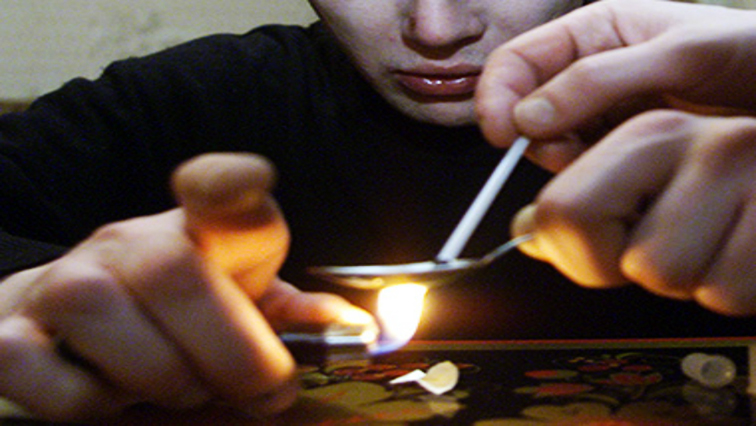As an eight-year-old *Connie G started using substances to try and detach from her environment corrupted by abuse.
“My mom was addicted to prescription drugs, stuff like Codeine and cough syrup. It was always around the house so I started drinking it. Then I started stealing alcohol. For me, it was just trying to numb out all of the abuse. It helped for a while but it couldn’t help me forever.”
Her story is remarkable as her sheer determination led to her finish her schooling despite her substance abuse disorder.
“I started clubbing when I was really young. My dealer would drop off at my house or I would collect from the bottom gate of my school. Because my mom was lost in addiction, I knew that I needed an education. I had no one to look after me. When I finished primary school she never enrolled me in high school so I stayed home for a year – but I found a way to enroll the next.”
The rabbit hole of substance abuse swallowed her whole until she finally broke free at 32 years of age.
“It’s so easy to get hold of drugs. Dealers will just keep contacting people and sometimes people just have a weak moment when they stop. It’s easier to get hold of a dealer than it is the police. My breaking point hit a couple of years before I stopped using. I was raped three separate times in one year. It brought back all the memories of my childhood as I started to isolate myself. I would just work and use all the time. On my last bender, I fell apart completely.”
Childline Gauteng’s Head of the Help Line Department, Faiza Khota, explains that there are many risk factors which predispose youths to turn to substances.
“Those who are exposed to daily traumas like violence, particularly gang-related violence or if they live in a community where there is a lot of violence. Other factors that place children at risk are being exposed to abuse themselves or where there is a loss of a family member.”
Is your child or someone young you know abusing drugs and/or alcohol? #DrugAbuse
— SABC News (@SABCNews) June 15, 2018
“Neglect is definitely a risk factor. A lot of our children’s emotional needs are not met so they feel very lonely, misunderstood, unloved, uncared for and then sometimes look to substances to fill those voids. You also can’t take away the fact of peer pressure and we need to talk to our children about peer pressure and how to face the situation when someone offers them substances,” says Khota.
The dangers of peer pressure
Addiction doesn’t differentiate on a person’s background as youths from well-rounded lifestyles also end up in depending on substances to function daily.
*Joey East felt the grips of peer pressure in high school and started drinking alcohol as a minor. She says it was easy to access as she grew up in a household where her mother faced a daily battle with alcohol and it rippled to her. By 17-years-old she moved onto the harder substances which she believed at the time was helping her with her studies.
“I found that it was easier to study when I was high, it makes you alert, it makes you work harder and I started to develop this false belief that I need the drugs to help me study. It was just a slippery slope. I got excited every time I had an essay or a test to study for – because it meant that I can justify getting what I want. I ended up flunking all my classes.”
Quintin van Kerken from the Clear Option Addiction Recovery Program says that the reason many youths abuse substances is due to not understanding the harm behind it.
“Anything is potentially harmful as soon as you can’t get through the day without it. As soon as you start using it as a coping mechanism to get away from your real life and you spend more time pursuing your substance or your drug then it’s a problem.”
“We look at how many kids commit suicide in school, from bullying to the amount of work that they have to do. There’s a tremendous amount of pressure and when kids do come across something that relieves that pressure and takes it away completely, they cling onto it because it’s fantastic, it makes them feel better than they have ever felt.”

Khota stresses that parents need to speak to their children honestly about the consequences of drugs and alcohol and how not to fall victim to someone else’s substance abuse problem.
“Talk to them about peer pressure, so if somebody does offer you something, how will you respond. Parents need to set a positive example and be a good role model to their children and encourage children to ask for help if they are in a situation where they have used substances. Children need to feel comfortable enough to come to their parents to say they need help.”
Isolation, depression and suicide
Like Connie G, Joey started to isolate herself as the drugs took over.
“It got really bad before I went to rehab and was completely isolating. I attempted suicide a few times and ended up in the hospital a lot. My health was affected and I didn’t go out anymore. I was actually severely depressed and I’m not a depressive person – so it induced that, real depression.”
“It completely alienates you from other people. You want to hide it from everyone and it’s so stressful. There’s such a stigma. How can you tell your parents? They never brought you up to be a drug addict; they never exposed me to those substances, so it’s bad because you are completely alone.”
Khota says we should focus on preventing substance abuse amongst our youth as the road to recovery is a very difficult one. She emphasises that a lot of their suicide and depression cases are a result of one having a substance abuse problem and not being able to access help.
“One of the greatest challenges that we have is that substance use is highly stigmatised. Many people view it as immoral or criminal and therefore there isn’t a great deal of empathy or understanding towards someone who has a substance abuse problem. It is not really seen as a health concern and that makes it a very isolating condition – so the amount of help you can access if you have a substance abuse problem is a lot less than if you had just another more acceptable health problem.”

Connie G has been clean for over two years and says that by joining Narcotics Anonymous (NA), the program has helped transform her life.
“NA offers a solution where former addicts in recovery help people who want to put a stop to substances. We all share our experiences, strength and hopes because often a lot of people are going through the same things that other people have gone through. Because there is that shared experience, there is a lot of connection that goes on and that makes it easier to start going clean.”
With family intervention, Joey East was able to deal with her substance abuse disorder. Now in her early 20s, she believes solidly that she has a bright future due to the hard work she put into recovery.
“My family wanted to send me to a psychiatric ward and I recommended that maybe I needed rehab – because at that point they still didn’t know. In the culture of recovery, there’s this idea that desperation is a gift. You can’t fathom falling further into this rabbit hole so you try to call out to people but it isn’t until you decide to let this thing go that you do.”
“With addiction, you form a relationship with the substance and unfortunately it’s like saying bye to a lover, like seeing someone die. It’s a very hard decision and it can’t be achieved without desperation, love, and support.

Khota concludes that there are many signs to look out for specifically amongst the youth in terms of physical and behavioural symptoms.
“If one starts to see things like bloodshot eyes, a decline in the person’s health, changes in appetite and sleeping patterns are usually something that one can pick up on quickly. Sudden weight loss or gain, slurred speech or impaired coordination’s.
“Dropping attendance at school, sudden decline in grades, unexplained requests for money or missing items in the house. You can find quite a change in the child’s personality, a change in the child’s demeanour – so becoming a bit more physically aggressive and lying. If you are starting to see those behaviours then you need to think that maybe there is a problem and investigate it further.”
*Name changed to protect identities





